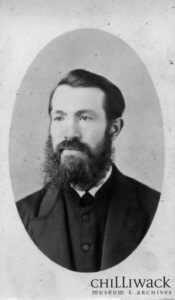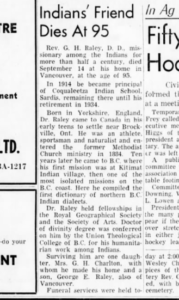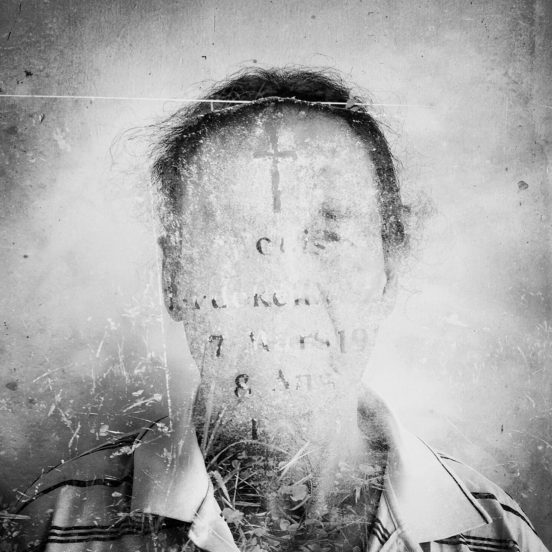Reverend Charles Montgomery Tate

Reverend Charles Tate, along with his wife Caroline, were the founding Missionary couple of Coqualeetza day school, which would eventually become Coqualeetza Residential School. They first began the day school in 1884 out of their home, ministering to just eight girls at the time. Upon feeling unsuccessful, the Women’s Missionary Society joined in their efforts and assisted financially to eventually erect the Coqualeetza Home.
Reverend. G.H. Raley

Following his postings at Kitimat in 1893 and Port Simpson in 1906, Reverend George H. Raley took charge as principal of Coqualeetza in 1914. When he arrived, he had enthusiastic plans for the development of education and creative native skills. It was Raley who, along with D.C. Scott and T. Ferrier of Home Missions, decided the Coqualeetza building was out of date and inadequate for students and staff alike. According to a memoir by a former student Dorothy Matheson, “the native children were treated well while Reverend Raley was in charge” (From: Coqualeetza: No Backward Step). The work he did to give Coqualeetza students a taste of home was still framed by European influence. Raley remained the principal at Coqualeetza until his retirement in 1934.
Dorothy Matheson
Dorothy Matheson, a former student at Coqualeetza Residential School, decided to write about her own experiences in her book: “Coqualeetza: No Backward Step”. She describes how terrifying it was to be a part of a time when children began to lose their identity. She explains that children were taken from a free and easy going lifestyle and put into a very strict and totally strange atmosphere. Students had to sit still in the classroom for half of the day and do chores for the other half of the day. However, she also describes that her time was “not all work and no play”. She explains that life was full of extra curricular activities for the students to engage with, although most of these were geared towards training the kids to follow a European lifestyle. She describes a school in which there was little punishment and mistreatment, yet still a school that sought to break down the children’s Indigenous identity and its cultural foundations. Dorothy goes on to describe her experience at Coqualeetza as positive, due to her teachers and Principal Raley. Although not every story is like Dorothy’s, she wrote the book to show that history has many perspectives.
